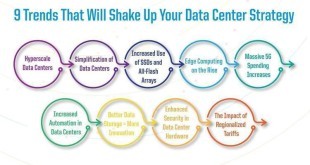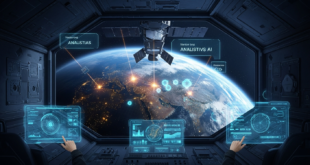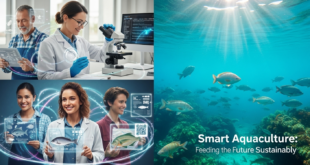Imagine a world where teamwork isn’t just about bringing diverse minds together, but about having an AI coach in the room analyzing your interactions and offering real-time suggestions to optimize your collaboration. That’s the future DARPA (Defense Advanced Research Projects Agency) is envisioning with its innovative program called Artificial Social Intelligence for Group Learning and Optimization of Collaborative Workflows (AGLOW).
The Challenge: Untapped Potential in Teamwork
Collaboration is the heart of innovation. Yet, even the brightest teams can struggle with inefficiencies. Time is wasted on redundant tasks, communication can be unclear, and valuable insights might get lost in the shuffle. Here’s where AGLOW steps in, aiming to address these challenges with a unique blend of AI techniques.
AGLOW: The AI Coach for Peak Performance
The Artificial Social Intelligence for Group Learning and Optimization of Collaborative Workflows (AGLOW) aims to revolutionize teamwork within DARPA by leveraging the power of Artificial Intelligence (AI). Here’s how it works:
Tracking the Flow of Ideas
AGLOW employs sophisticated algorithms to monitor and analyze team interactions. This involves:
- Analyzing Communications: Evaluating emails, documents, meeting recordings, and virtual workspace activity to understand the flow of ideas.
- Speech Recognition: Transcribing spoken conversations from meetings and brainstorming sessions to capture all inputs.
- Text Analysis: Extracting key insights and meanings from text-based communications.
Identifying Collaboration Patterns
AGLOW identifies patterns in team dynamics and collaboration by:
- Spotting Strengths and Weaknesses: Recognizing effective communication strategies and areas needing improvement.
- Detecting Knowledge Gaps: Highlighting areas where team members lack information or expertise.
- Anticipating Roadblocks: Predicting potential obstacles in the workflow before they become issues.
Coaching for Success
Based on its analysis, AGLOW acts as a virtual coach, providing real-time suggestions to enhance collaboration:
- Prompting Expertise Sharing: Encouraging team members to share relevant knowledge and skills.
- Suggesting Communication Channels: Recommending the most effective ways for team members to communicate.
- Flagging Potential Biases: Identifying and addressing biases in decision-making to promote inclusivity.
Benefits of AGLOW: More Than Just Teamwork
The potential benefits of AGLOW extend far beyond improved collaboration:
- Faster Innovation Cycles: By streamlining problem-solving and optimizing workflows, AGLOW accelerates the path to breakthroughs.
- Enhanced Knowledge Sharing: Ensuring all team members are on the same page by identifying and addressing knowledge gaps.
- Reduced Bias: Providing objective analysis to mitigate biases, leading to more inclusive and effective teamwork.
How AI Coaches DARPA Teams with AGLOW (and the Tech Behind It)
1. Natural Language Processing (NLP) at the Core
AGLOW heavily relies on NLP to understand the flow of ideas within a team. This involves:
- Speech Recognition: Transcribing spoken conversation from meetings, calls, and even informal brainstorming sessions.
- Text Analysis: Extracting meaning from emails, documents, and other text-based communication within the team’s workspace.
- Sentiment Analysis: Understanding the emotional tone of communication to identify potential conflicts or areas requiring additional support.
2. Building a Social Network Graph
AGLOW goes beyond simply analyzing content. It constructs a dynamic social network graph of the team, considering factors like:
- Communication Frequency: Identifying who interacts with whom the most, recognizing key collaborators and potential knowledge silos.
- Expertise Mapping: Understanding individual team member strengths and aligning communication for optimal knowledge sharing.
- Task Assignment Patterns: Detecting imbalances in workload distribution or bottlenecks in the workflow.
3. Machine Learning for Pattern Recognition
With the data collected, AGLOW utilizes machine learning algorithms to identify patterns and trends in team behavior. This includes:
- Identifying Recurring Issues: Flagging common communication pitfalls like unclear instructions or lack of participation from specific team members.
- Predicting Roadblocks: Analyzing communication patterns to anticipate potential challenges before they arise, allowing for proactive solutions.
- Recommending Best Practices: Suggesting communication strategies based on successful past interactions within the team or learnings from broader datasets.
4. AI-powered Coaching and Intervention
Based on its analysis, AGLOW acts as a virtual coach, providing actionable suggestions through various channels:
- Personalized Prompts: Informing individual team members of knowledge gaps they can fill or expertise they can share with others.
- Adaptive Meeting Agendas: Suggesting topics or individuals to include in upcoming meetings based on real-time needs.
- Collaborative Workspace Integration: Providing prompts and recommendations directly within the team’s shared workspace for seamless integration into their workflow.
Charles River Analytics Develops AI Coach for Enhanced Collaboration at DARPA
Charles River Analytics has secured a Small Business Innovation Research (SBIR) Phase II contract to develop cutting-edge collaboration software and an artificial intelligence (AI) coach for the Defense Advanced Research Projects Agency (DARPA). The initiative, dubbed the Artificial Social Intelligence for Group Learning and Optimization of Collaborative Workflows (AGLOW), is designed to revolutionize team collaboration within DARPA by meticulously tracking problem-solving activities and offering insightful coaching suggestions.
“The tool could let you know what the other people on your team are trying to accomplish without the need for continuous, disruptive status meetings,” said Leonard Eusebi, senior scientist at Charles River Analytics and principal investigator on the AGLOW effort.
AGLOW aims to streamline collaboration with several innovative components:
- Microsoft Word Add-in: This feature highlights key questions, answers, and insights about a task, making important information easily accessible.
- Web Interface: A user-friendly interface for collecting tasks and summarizing behaviors to keep track of team activities.
- Cognitive Architecture: This system interprets behaviors in relation to goals, ensuring alignment and efficiency.
- AI Coach: The AI coach suggests actions to improve collaboration, helping teams work together more effectively.
Valued at approximately $1.5 million, the SBIR Phase II contract underscores the significance of enhancing collaborative workflows within DARPA. By leveraging AGLOW, DARPA teams can expect to see a substantial reduction in the need for disruptive status meetings, leading to a more seamless and productive working environment.
The Road Ahead: Shaping the Future of Collaboration
AGLOW is still under development, but the technical details reveal its immense potential for revolutionizing teamwork. Its applications extend far beyond DARPA, with potential for use in businesses, research institutions, and even educational settings. The future of collaboration might involve AI coaches like AGLOW, not just automating tasks but actively guiding us to collaborate more effectively.
By leveraging advanced AI technologies, DARPA’s AGLOW program is paving the way for a new era of teamwork. In this future, AI coaches will help teams unlock their full potential, turning brainstorming sessions into breakthroughs and ensuring that collaboration is as efficient and productive as possible.
 International Defense Security & Technology Your trusted Source for News, Research and Analysis
International Defense Security & Technology Your trusted Source for News, Research and Analysis


